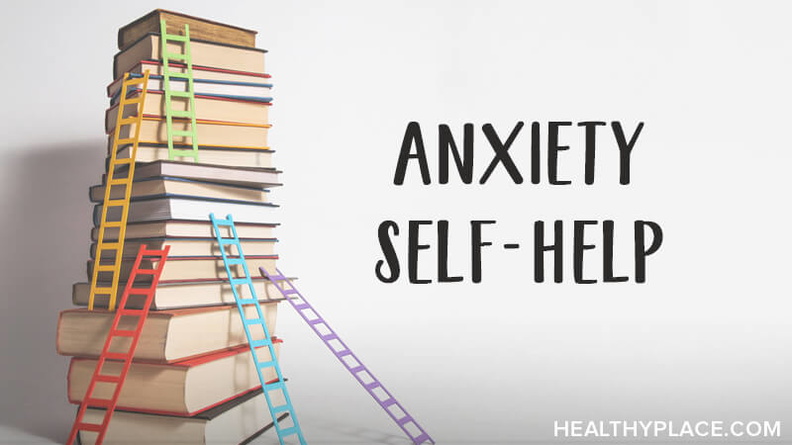Challenging Anxious Thoughts: Learning to Distrust Your Gut

Challenging anxious thoughts is more difficult when we have a strong gut reaction – the sensation that something is wrong and that we need to act to stop it. When there is no concrete threat, our minds tend to conjure myriad potential threats, generating frightening thoughts that feel indisputably true. However, these anxious thoughts are rarely accurate and lead us down a rabbit hole of anxious thinking that is hard to interrupt. I’ve found from my own experiences with anxiety that just challenging the accuracy of my thoughts isn’t effective because they still feel accurate to me. Instead, I use an approach that challenges the validity of my anxious thoughts and improves my emotional state. Here’s one process for challenging anxious thoughts I’ve learned for working through them effectively.
3 Steps for Challenging Anxious Thoughts
- Notice that your thoughts are anxious. While this step may sound simple, when you are anxious it can be difficult to disentangle anxious from non-anxious thoughts. Identifying which thoughts arise from a specific anxiety creates distance between you and the thought, giving you an opportunity to challenge its validity.
- Acknowledge that because your thoughts are rooted in anxiety, they are unlikely to be true. Although anxious thoughts frequently feel like they are true, if you ask yourself how accurate they are, you’ll notice they rarely correspond to reality (Are Your Anxious Thoughts Trustworthy?). Because anxious thoughts are centered on situations that frighten you, they tend to identify the worst-case scenario, which is unlikely to happen. Acknowledging that anxious thoughts are not accurate further distances you from them, allowing you to see that they aren’t necessarily true.
- Think of something that makes you happy. It is not enough to acknowledge that a thought is unlikely to be true; if you’re feeling anxious, you’re likely to continue experiencing similar thoughts. To move past anxious thoughts, you need to think of something that makes you feel good. For example, bring up a positive experience that you had recently, something as simple as “I enjoyed talking to a friend.” This is a powerful tool for inspiring positive feelings and derailing anxious thinking.
This is one approach that will empower you to challenge your anxious thoughts at both the cognitive and emotional level, addressing your worries and helping you feel better in the moment. What other strategies do you use for challenging anxious thoughts?
APA Reference
Abitante, G.
(2018, June 17). Challenging Anxious Thoughts: Learning to Distrust Your Gut, HealthyPlace. Retrieved
on 2025, December 2 from https://www.healthyplace.com/blogs/treatinganxiety/anxiety-symptoms-treating-anxiety/2018/6/challenging-anxious-thoughts-learning-to-distrust-your-gut
Author: George Abitante
I get crazy anxiety & ussally result with strong panic which almost always leads to medication just to ease the raceiness and even out & feel normal again for me tried self help nothing seems to work but the meds I hate dependence of a dann pill so you have any ideas I'm open??
Hi Randall, thanks for your question! It sounds like you’re experiencing pretty severe anxiety and panic attacks, so I’d recommend discussing these questions with your psychiatrist. As for self-help strategies you can use, I’d absolutely recommend the steps listed in this post as something to practice when you’re feeling anxious. Panic attacks are really tricky to work through, and I’ll be writing about this in a future post, but a good starting point is to practice recognizing that panic attacks are not actually dangerous. Now, that’s not to say that the sensations you experience don’t feel scary or dangerous, because they absolutely do, but reminding yourself that you’re just experiencing a panic attack and that it will pass can be a great way to feel better during it. Another trick you can try is to start a timer when you first start experiencing panic - you’ll find that it doesn’t last nearly as long as it seems, and this can help you reassert control during a panic attack. Hope this helps, keep up the good work!
I love these steps! This is such a wonderful read because it's one of those things that most people without anxiety wouldn't think about. Trusting your gut is often something that people are encouraged to do more of, and while this is great, anxious thoughts can be a little different to work with. Things can feel visceral but taking that pause to recognize our thoughts are being anxious can help us find a little distance, and clarity.
Hi Lizanne, so glad you found the article helpful, thanks for reading. You’re absolutely right, figuring out how to take that pause from how anxious thoughts feel is so important for working through those thoughts. This is one reason having a process for working through anxious thinking can be so helpful - it creates space and gives you a positive direction for your thoughts to go.
